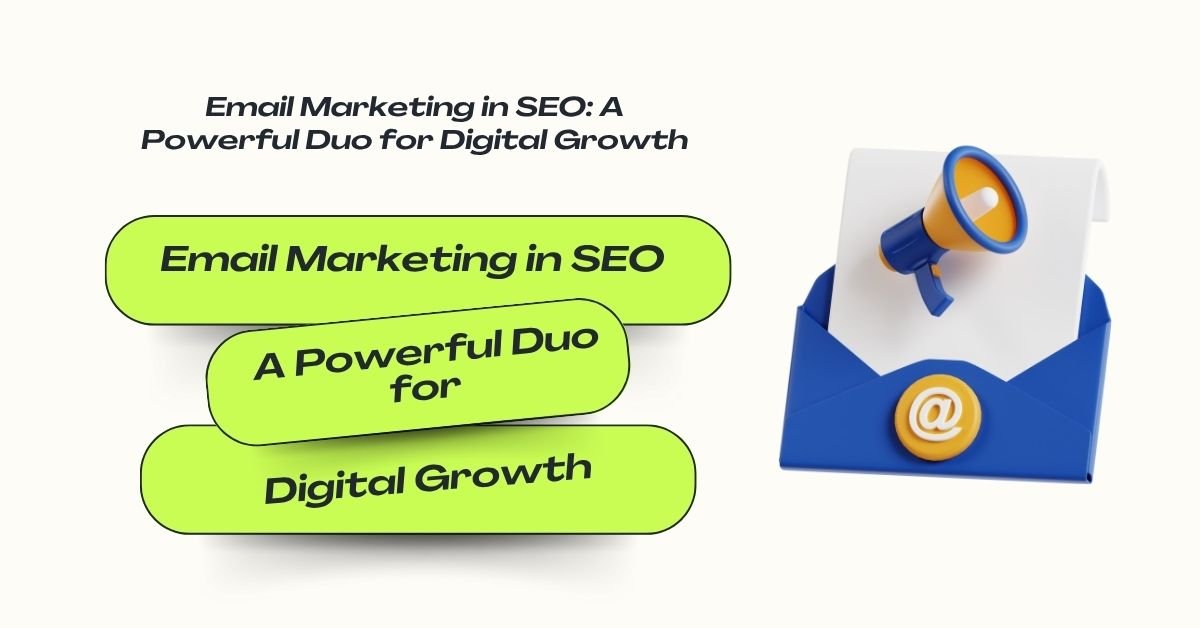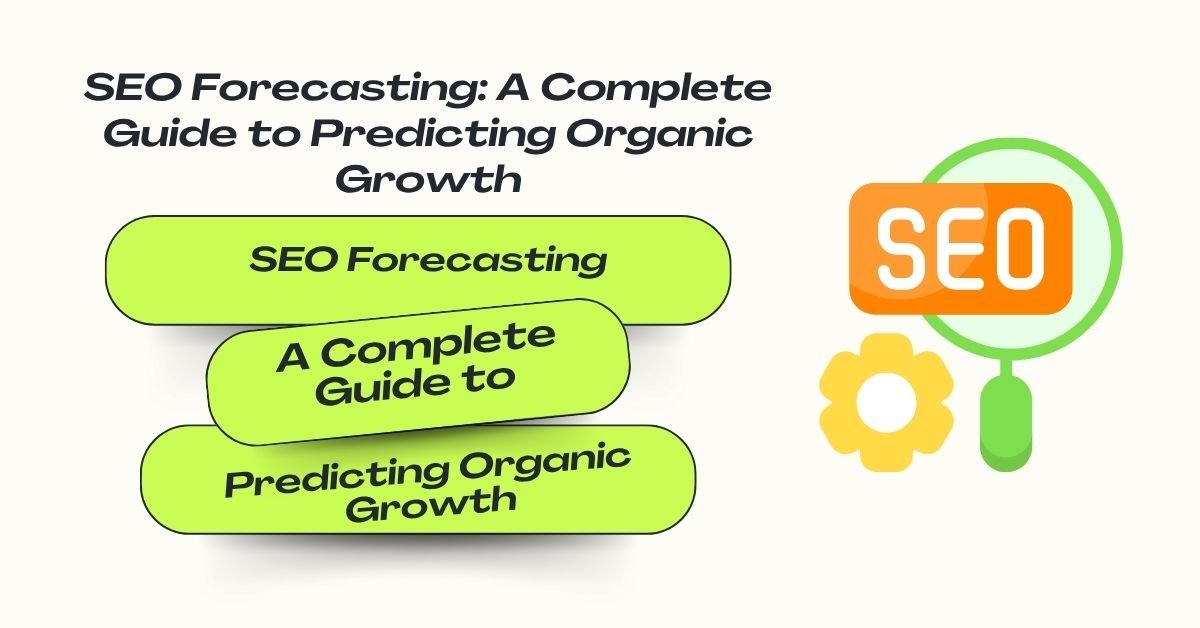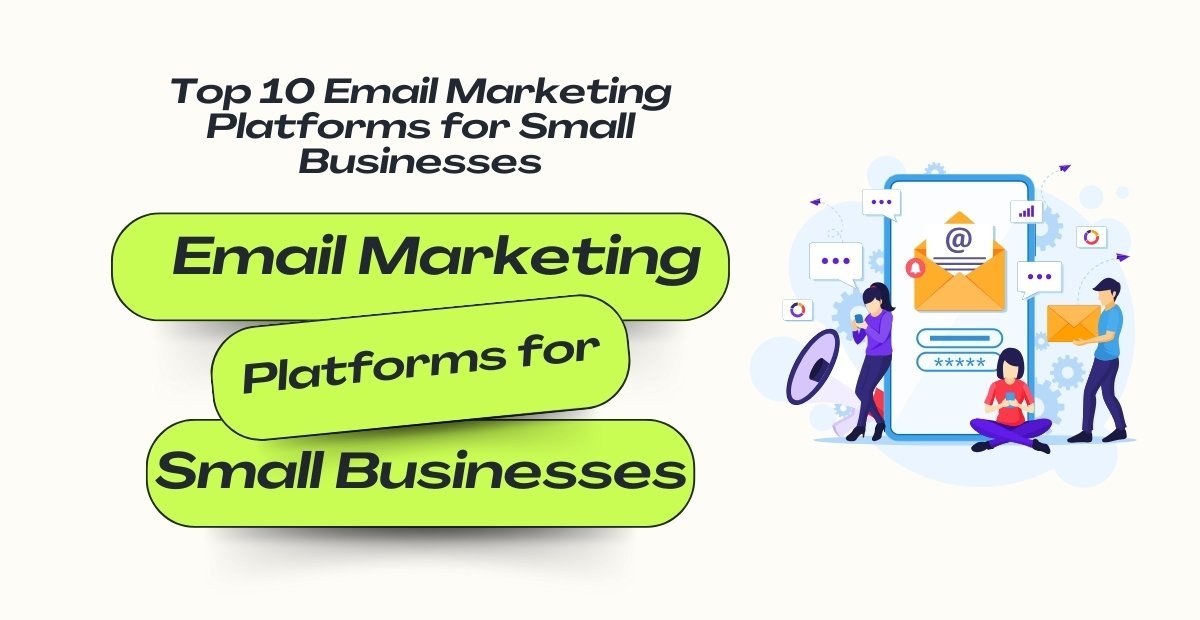
Email Marketing in SEO: A Duo for Digital Growth
When email marketing in SEO comes together, the results can be game-changing. While SEO drives organic traffic to your website, email marketing keeps that audience engaged. Both channels work best when they support each other, offering not just reach, but lasting relationships.
Let’s say your blog ranks well for a high-intent keyword. Adding a strong email opt-in CTA lets you turn that organic visitor into a subscriber. Now, every new blog post you publish can be shared via email, boosting return visits and increasing your page’s authority in Google’s eyes. That’s SEO and email synergy in action.
Why Combine Email Marketing and SEO?
Combining email marketing and SEO is one of the smartest ways to boost your digital performance. Each works well on its own, but together, they build a stronger, more sustainable growth engine.
SEO helps you attract visitors through search engines using targeted keywords. But most new visitors won’t convert right away. That’s where email marketing comes in. It lets you capture leads, nurture them, and bring them back with personalized content.
For example, let’s say you write a blog post that ranks well for “best productivity apps.” At the end, you offer a free downloadable guide in exchange for an email. Now you’re turning organic traffic into subscribers you can reach again and again.
Plus, email marketing helps amplify your SEO content. Every newsletter or drip campaign is a chance to reshare your blog posts, increasing page views, dwell time, and backlinks. All of that helps boost your search rankings.
This strategy also gives you direct audience insights. What content gets more opens or clicks? Use that data to refine your keyword strategy. The result? More targeted traffic and more conversions.
Understanding the Basics of Email Marketing & SEO
Before you combine email marketing and SEO, it’s important to get a grip on how each works at its core.
Email marketing is about sending targeted messages to your subscribers. These can be newsletters, offers, blog updates, or onboarding emails. The goal? Build trust, drive engagement, and keep your brand top of mind.
SEO (Search Engine Optimization) focuses on improving your website’s visibility in search results. It involves keyword research, content creation, link building, and technical improvements that help your pages rank higher on Google.
Now, here’s the key: both email and SEO are owned channels. That means you’re not renting space like in paid ads. You control the message, the list, and the content. This gives you long-term control over your digital growth.
When done right, email boosts SEO efforts by bringing traffic back to your blog posts, promoting your product pages, and increasing time-on-site. Meanwhile, SEO helps you grow your list by capturing subscribers through high-traffic content.
Think of it like this: SEO gets them in the door. Email invites them to stay. Together, they create a full-cycle marketing strategy.
How Email Marketing Supports SEO?
Email marketing doesn’t directly boost search rankings, but it does everything that helps them. When done right, it drives traffic, increases engagement, and builds authority, three things search engines love.
Here’s how it works:
Brings Targeted Traffic to SEO Pages
A well-crafted email can guide readers straight to your blog, landing page, or product section. These visitors are already interested, which increases time on page and lowers bounce rate, both key SEO signals.
Encourages Backlinks
Share your best content through newsletters. If the right people see it, bloggers, journalists, influencers, they might link back. That improves your site’s domain authority over time.
Boosts Content Visibility
Promoting new blog posts via email gives your SEO content an early traffic push. Google notices when fresh content gets traction quickly, which may lead to faster indexing and better rankings.
Improves User Signals
Email subscribers often interact more deeply, clicking, reading, and sharing. This higher engagement tells Google your content is valuable and relevant.
Increases Branded Search
The more people read your emails and trust your brand, the more they search for it directly on Google. Branded search volume is a subtle but powerful SEO ranking factor.
For example, SaaS platforms like Notion or Grammarly promote their blog posts via weekly emails. These posts rank well because they consistently get early traffic, shares, and links fuelled by email.
Sensors of Strategy – How Data Powers Both Channels?
In both email marketing and SEO, data is the sensor that guides every move. Without it, you’re flying blind. But with the right insights, you can fine-tune your strategy for maximum impact.
For email, click-through rates, open rates, and unsubscribe data reveal what your audience loves or ignores. If your blog links in emails get high clicks, that signals content worth promoting more through SEO.
On the SEO side, Google Analytics, Search Console, and heatmaps show how users land on your site, where they drop off, and what keywords they search. When paired with email behaviour, you get a full-funnel view—from search to scroll to click.
Here’s where it gets powerful:
- Content Performance: If an email featuring a blog gets strong engagement, that topic is a goldmine. Use that data to build more SEO content around similar keywords.
- User Segmentation: Email tools help segment users by interest. Pair that with SEO intent data, and you can personalize content that performs well on both search and inbox.
- A/B Testing: Test subject lines in emails, headlines in blogs. Data from one channel improves the other, creating a feedback loop of optimization.
Think of data as your real-time GPS. Brands like HubSpot and Moz use this cross-channel intelligence to create smarter funnels driving users from Google to email, and from inbox to deeper site actions.
In today’s digital world, strategy isn’t about guessing; it’s about reading the signals. And data is the most accurate sensor you’ve got.
Keyword Integration for Emails
Using keywords in email marketing isn’t just for SEO; it helps boost engagement, relevance, and conversion. When done right, keyword integration turns your emails into high-performing assets that align with your website’s content and user intent.
Start with the subject line. This is your first impression. Including target keywords like “best time to invest,” “email marketing tips,” or “free SEO tools” improves open rates because they match what users are already searching or interested in.
Next, weave keywords naturally into the body text. Don’t force them, make them part of the conversation. For example, if you’re promoting a blog post on “how to boost website traffic,” include that phrase in the email copy with a clear CTA like:
“Read our guide on how to boost website traffic in 2024.”
Also, preheader text is often overlooked but is a valuable SEO-friendly space. Make sure it supports your subject line with related keywords and encourages clicks.
Real-world example? SaaS companies like Mailchimp and SEMrush often align their emails with blog SEO topics, using consistent keyword phrasing across channels. This creates content synergy and increases their chances of ranking and engaging.
Remember, keyword integration isn’t just about visibility, it’s about clarity and connection. Use the words your audience is already looking for, and you’ll make every email count.
Long-Term Durability: How This Combo Pays Off Over Time?
Combining email marketing and SEO creates long-lasting digital value. Unlike paid ads that stop delivering once you pause the budget, this duo keeps working silently in the background month after month.
SEO builds organic traffic over time. It helps you rank for high-intent keywords that drive consistent visitors to your site. But here’s where email comes in: it nurtures that traffic, keeping your audience engaged and coming back. Together, they build a loop. SEO brings people in, and email keeps them connected.
For example, let’s say your blog ranks for “best productivity apps.” You capture visitors with a lead magnet, then send email newsletters that keep them engaged with updates, offers, and value-driven content. Even if your rankings fluctuate, your email list remains strong; it’s owned traffic.
Over time, this combination reduces your dependency on ads and gives you a predictable ROI. A well-optimized blog post may rank for years. And a well-segmented email list? It can drive sales during product launches or seasonal campaigns without extra spending.
Big brands like HubSpot and Canva have scaled this way, focusing on SEO-rich content and turning their readers into loyal email subscribers.
In short, SEO and email marketing age well together. The longer you use them, the stronger your digital ecosystem becomes. It’s not just a strategy, it’s a sustainable growth engine.
Tools and Platforms to Combine Email with SEO
1. HubSpot
An all-in-one platform offering SEO tools, email marketing automation, and lead tracking. Great for aligning blog content with automated email workflows.
2. Mailchimp + Google Analytics
While Mailchimp focuses on email, it integrates smoothly with Google Analytics. You can track how email campaigns affect website visits, bounce rates, and SEO performance.
3. ConvertKit
Ideal for content creators. It allows for SEO-optimized landing pages and email sequences based on user behaviour and keyword-focused tags.
4. Semrush
A powerful SEO platform. Use it to find trending keywords and then create newsletters or email content that ranks and drives organic traffic.
5. Ahrefs
Known for deep backlink and keyword data. Marketers use Ahrefs to plan SEO content and follow up with email campaigns that boost link building or re-engagement.
6. Klaviyo
Popular in eCommerce. Combines product analytics, customer data, and email flows that are SEO-aware, driving both rankings and repeat purchases.
7. Yoast + Mailchimp for WordPress
Yoast helps with SEO optimization of blog posts. Pair it with Mailchimp to collect emails directly from high-ranking content and nurture readers.
8. Get Response
Offers SEO-friendly landing pages and integrates email workflows with lead magnets, webinars, and drip campaigns.
9. Active Campaign
Combines CRM, SEO-optimized forms, and advanced email automation great for segmenting based on what users search or click.
10. Google Search Console + Email Reports
Use data from GSC to identify top-performing search queries, then build newsletter content around those terms to increase engagement.
Each of these tools supports both email and SEO alignment, helping you build stronger audience relationships while improving visibility across search engines.
Case Studies – Global Brands Doing It Right
- Airbnb: Airbnb smartly integrates SEO with email marketing by repurposing high-performing blog content into newsletters. For example, a blog post on “Top 10 Hidden Vacation Spots” is shared through emails to boost engagement and organic traffic simultaneously.
- Amazon: Amazon uses keyword-rich product recommendations in its email campaigns based on users’ past searches. This not only increases email click-through rates but also supports long-tail keyword targeting for SEO.
- Spotify: Spotify sends personalized email digests like “Your Year in Music,” which drive users to SEO-optimized landing pages. These campaigns are highly shareable, building backlinks and increasing organic reach.
- Canva: Canva combines tutorial-based blog content with automated email flows. If a user downloads a free template, they receive emails linking back to SEO-focused guides, boosting both search traffic and user retention.
- Nike: Nike integrates branded content with SEO strategies by pushing product stories via email. For instance, new sneaker drops are announced in emails with direct links to landing pages built around trending keywords.
- HubSpot: A classic case of inbound success, HubSpot aligns its SEO blog strategy with nurturing emails. When someone downloads an ebook, they’re entered into an email series linking to related high-ranking articles.
- Apple: Apple promotes SEO-rich product pages through launch emails. Each product announcement includes keywords, clean URLs, and CTAs that increase both traffic and SERP visibility.
These brands show how email marketing and SEO synergy isn’t just theory, it’s a powerful, proven approach that scales brand visibility and engagement globally.
Challenges to Watch For
Keyword Overload in Emails – Trying to stuff too many keywords into email content can harm readability and user engagement. Unlike blog posts, emails need to be concise and human. Always focus on value first.
Tracking SEO Impact from Emails – It’s tough to measure how emails influence SEO rankings directly. While traffic and backlinks help, email’s role in SEO success is more indirect and long-term.
Email Deliverability Issues – Using SEO keywords in subject lines or body text that sound spammy can hurt deliverability balance keyword usage with natural language to avoid triggering spam filters.
Segmenting the Right Audience – Sending SEO-related content to the wrong audience leads to low open rates and high bounce rates. Poor engagement signals can also hurt your domain’s sender reputation.
Link Cannibalization Risks – Repeatedly linking to the same SEO pages in every email might confuse search engines. It’s better to diversify anchor text and rotate content links.
Content Mismatch – If email content doesn’t match the SEO-optimized landing page, bounce rates spike. This breaks the user journey and signals poor relevance to search engines.
Platform Compatibility – Not all email platforms support SEO tracking integrations smoothly. Choose tools that allow link tracking, UTM tagging, and SEO metric sync with Google Analytics.
Compliance and Privacy Laws – GDPR and similar laws limit how much behavioural data you can use for personalization, affecting keyword-targeted content strategies in emails.
These challenges don’t mean you shouldn’t combine email and SEO but they do tell you need a smart, cautious, and data-backed approach to make the most of it.
Final Thoughts – Smarter Together
Combining email marketing and SEO isn’t just smart, it’s essential for brands aiming for long-term growth. These two strategies complement each other in ways many still overlook. SEO brings in organic traffic. Email keeps that traffic engaged, nurtured, and coming back.
When you publish valuable blog content, SEO gets it discovered. But if you also share that content with your email list, you amplify reach, drive repeat traffic, and increase chances for backlinks and an SEO win. Likewise, keyword-rich email newsletters that point to well-optimized landing pages can boost both open rates and site engagement.





Add Comment